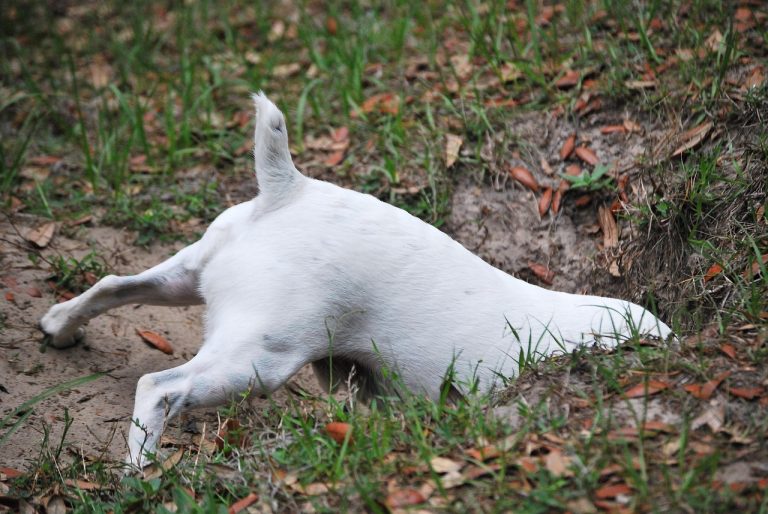Is My Cat Lonely? Signs and Solutions to Consider
“Is my cat lonely? Discover the signs and effective solutions to ensure your cat feels happy and engaged. Learn more in our comprehensive guide.”


Don’t leave your pet’s safety to chance
Sign up for Petful recall alerts today.

Is My Cat Lonely? Understanding the Signs
As a pet sitter, I’ve observed that one of the biggest myths is that cats “don’t need any social interaction.” While some cats — particularly rescued ferals — aren’t interested in hanging out, most cats need at least some “face time” every day. My pet-sitting clients often schedule visits ranging from every other day to twice a day, and some even have me stay overnight with their cat.
Is My Cat Lonely? Recognizing the Signs
If someone is away for an extended period, I often notice changes in the cat’s behavior. You can usually tell when your cat isn’t feeling right. If you’re wondering, “is my cat lonely?” consider these signs:
- Increased vocalization
- Destructiveness
- Clinginess
- Aggressiveness
- Marking
- Excessive grooming
Choosing a Pet Sitter: Addressing Cat Loneliness
To help address the question, “is my cat lonely?” it’s crucial to choose a reliable pet sitter who understands your cat’s needs. Make sure to inform them about your cat’s particular habits, any stressors they may have, and their favorite hiding places.
Behavior Changes in Lonely Cats
When asking “is my cat lonely?” one of the most telling signs is a change in behavior. Loneliness and accompanying anxiety can lead to significant behavior changes in cats:
- Increased Vocalization: A cat will wander through the house, meowing constantly or even yowling, looking for someone to answer them.
- Destructiveness: Like dogs, cats can be destructive when they’re bored or experiencing anxiety.
- Clinginess: Some cats who are typically aloof will suddenly not want to leave your side.
- Aggressiveness: Cats may become aggressive or rush the door when someone (like the pet sitter) tries to leave.
- Marking: In other words, defecating and urinating outside the litter box purposefully to express displeasure.
- Excessive Grooming: Cats can over-groom to the point of skin irritation when they’re stressed or unhappy.
A cat’s behavior is the best indicator of their health and well-being. Watch for any sudden changes and ask yourself, “is my cat lonely?”
Pet Sitters: Observing Cat Behavior
Pet sitters: Never leave a visit without at least visually confirming that the cat is in good condition and in a safe place. Let your clients know about any behavior that seems off or different from the cat’s normal behavior.
Pet Parents: Communicating with Pet Sitters
Pet parents: Inform your pet sitter about your cat’s particular habits, any stressors they may have, and their favorite hiding places. This information can help address the question, “is my cat lonely?” and ensure proper care and attention.

Why Cats Get Lonely
When asking “is my cat lonely?” it’s important to understand that cats can engage in various frustrating behaviors when they’re lonely. It’s easy for a pet parent to attribute these behaviors to naughtiness, but in reality, cats generally aren’t trying to simply be destructive. They’re trying to tell you something.
“It’s only when you stop interpreting your cat’s behavior as mean, spiteful, stupid, deliberate or lazy that you stand a chance of correcting the problem,” advises cat behavior expert Pam Johnson-Bennett in her book Think Like a Cat.
Life changes can impact how much attention your cat is getting and how much alone time they have. These changes include:
- A new job
- Increased travel
- Having a baby
- Moving in with a significant other
- Relocating to a new home
All these factors can contribute to the question, “is my cat lonely?”
The Importance of Behavioral Stimulation
“Behavioral stimulation is just as important for cats as it is for dogs – maybe even more so since many cats only have you and the world you create for them inside your home,” writes Dr. Gary Weitzman, DVM, MPH, CAWA, in the National Geographic Complete Guide to Pet Health, Behavior and Happiness.
Creating a Stimulating Environment
To address the question “is my cat lonely?” consider the following:
- Introduce new interactive toys: These can keep your cat engaged, especially during changes in the household.
- Leave window blinds open: Let your cat look outside, and consider hanging a bird feeder if your cat can handle it without stress.
- Work with your pet sitter: They can help by opening and closing window blinds during their visits if you prefer not to leave them open at night.
Understanding Cat Personality: Is My Cat Lonely?
Cats exhibit a wide range of personalities, which should be considered when addressing the question, “is my cat lonely?”
- Clingy Cats: Some cats, like one of my kitty clients, are incredibly clingy and want to spend the entire visit sitting on your shoulder (or even your head!).
- Independent Cats: Others, like almost feral cats, may prefer minimal interaction with people.
- Varied Personalities: Many cats fall somewhere in between, with varying social needs.
For Pet Sitters: Tailoring Visits to Cat Personalities
For pet sitters, it’s crucial to meet the cat or cats before taking on any visits and have a detailed discussion with clients about their cats’ needs. If a cat enjoys spending time with people, it’s advisable to schedule more than one visit a day to help prevent loneliness.
Addressing Loneliness Based on Cat Personality
Rescued ferals and even some household cats may prefer less interaction with people, and that’s perfectly fine. However, it’s important to verbally check and interact with every cat daily. The steps you take to combat loneliness should be tailored to each cat’s personality.
A Few More Ideas to Prevent Loneliness in Cats
If you’re wondering, “is my cat lonely?” here are a few more ideas to keep your feline friend entertained and happy:
Bird Feeders Outside the Windows
- Many cats are fascinated by the sight of birds. While some may get stressed when they can’t actually prey on the birds, others are content just watching. If your cat is sanguine enough, bird feeders can be a great way to provide entertainment and prevent loneliness.
Catio
- A catio is an excellent solution for pet parents who want their cat to enjoy the outdoors safely.
- Catios are enclosures that you can set up outside, with an entrance that can be placed flush with a window. By simply opening the window, you allow your cat access to the catio. This setup lets cats sunbathe and explore without the risks of encountering predators or getting lost.

Interactive Cat Toys
- There are numerous interactive toys available to keep your cat engaged:
- Treat-Dispensing Balls: My cat has a hard plastic ball that dispenses treats when it rolls across the floor. It brilliantly keeps Harrison both moving and interested.
- Paper Bags and Crinkly Noises: Some cats love the crinkly sounds of paper bags. For extra fun, open a few bags in different places and leave toys and treats inside for your cat to find. Avoid using plastic bags, as they can pose choking hazards or entangle your cat.
- Catnip-Filled Toys: These are a big hit with most cats and come in various catnip types and shapes.
- Dangling Toys: While fun, try not to use thin strings that your cat could swallow.
Getting Another Cat
- A playmate can be an excellent companion for social cats. Consider adopting a new feline friend for your cat. However, this solution isn’t ideal for every cat. Some cats may not react well to a new cat on their turf, potentially worsening their behavior. Assess your cat’s personality to decide if this is the right choice for them.
In this video, Dr. Jace King, DVM, shares some quick tips on how to tell if your cat is depressed or lonely:
Final Thoughts: Is My Cat Lonely?
The first step in addressing the question, “is my cat lonely?” is to determine the underlying cause of any aberrant behavior. Always start by ruling out medical issues with a visit to the veterinarian.
If your cat is healthy, consider any recent changes in your household or your cat’s routine. Identifying these changes can help you understand why your cat might be feeling lonely or acting out.
A few simple steps, such as providing more social interaction, adding enriching activities, or even considering a feline companion, can help correct self-destructive or aberrant behaviors. By addressing these issues, you can make your cat much happier and more content in their environment.
Frequently Asked Questions (FAQ)
How do I know if my cat is lonely?
Look for signs like increased vocalization, clinginess, destructive behavior, or changes in eating and grooming habits.
How to tell if my cat is lonely?
Noticeable changes in behavior, such as excessive meowing or a sudden need for attention, may indicate loneliness.
How can I tell if my cat is lonely?
Watch for signs like aggressiveness, marking territory, or excessive grooming, which can suggest loneliness.
My cat is lonely, what should I do?
Provide more social interaction, introduce new toys, or consider getting a feline companion to keep your cat engaged.
References
- Johnson-Bennett, Pam. Think Like a Cat: How to Raise a Well-Adjusted Cat — Not a Sour Puss. Penguin. 2011. https://books.google.com/books?id=I_oU6Ib9nt8C&pg=PT179#v=onepage&q&f=false.
- Weitzman, Gary, DVM, MPH, CAWA. National Geographic Complete Guide to Pet Health, Behavior and Happiness. National Geographic Books. 2019. https://books.google.com/books?id=89CLDwAAQBAJ&pg=PA105#v=onepage&q&f=false.
- “10 Tips to Keep Your Cat Happy Indoors.” The Humane Society of the United States. https://www.humanesociety.org/resources/10-tips-keep-your-cat-happy-indoors.
- Williams, Julia. “10 Ways to Entertain Your Cat on a Budget.” Canidae. April 12, 2017. https://www.canidae.com/blog/2017/04/10-ways-to-entertain-your-cat-on-a-budget/.
- Mitrokostas, Sophia. “8 Signs That Your Pet Is Lonely and How to Help.” Insider. June 18, 2019. https://www.insider.com/signs-your-pet-is-lonely-2019-6.








